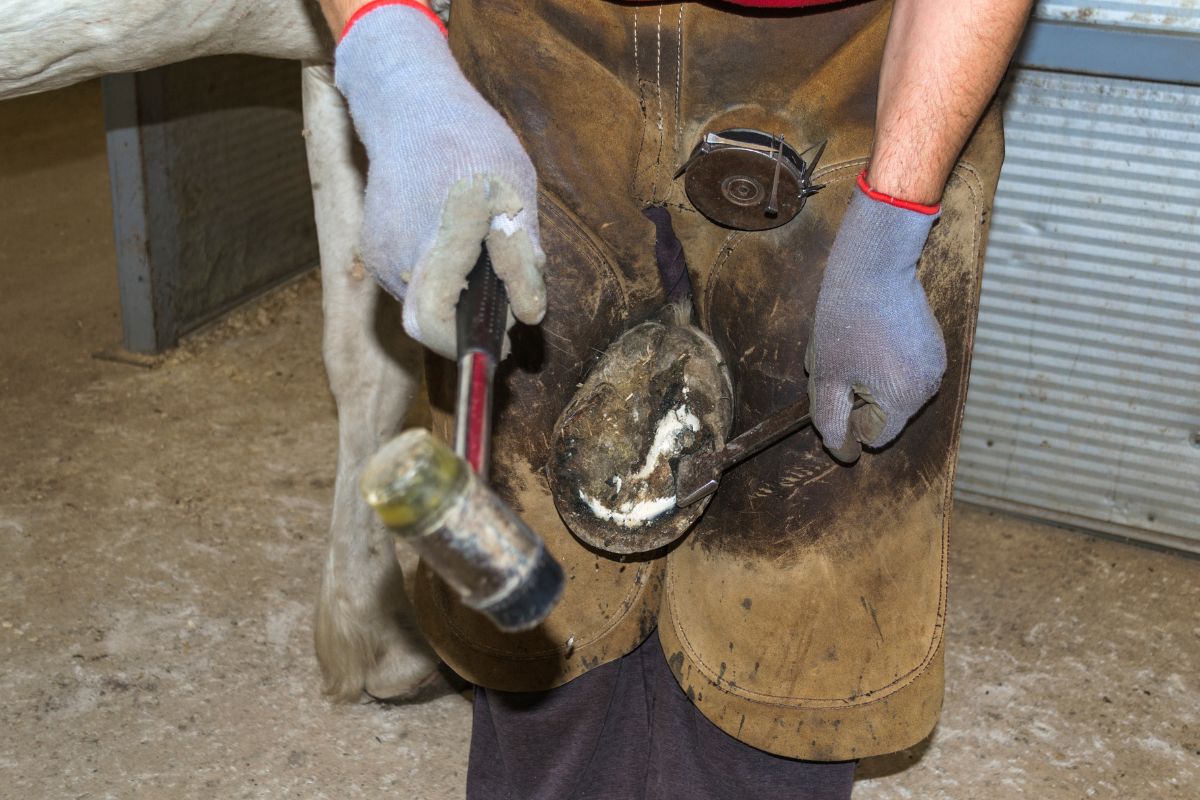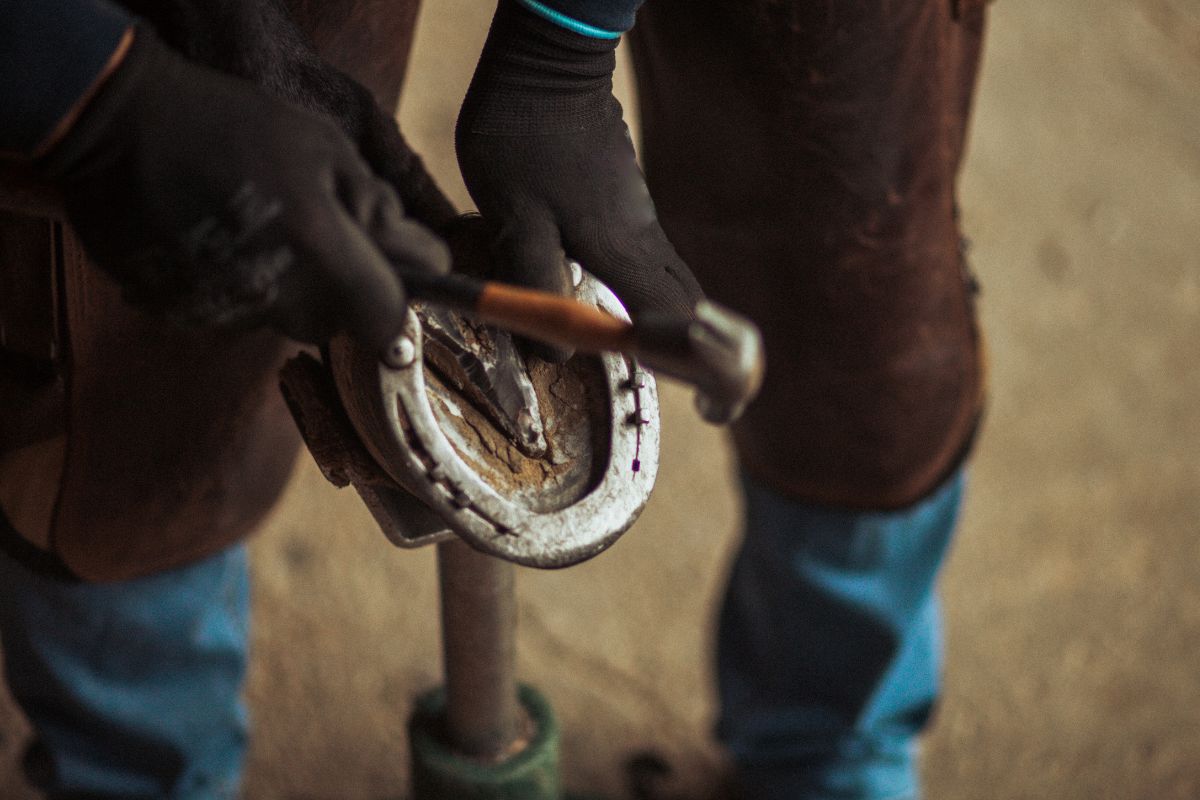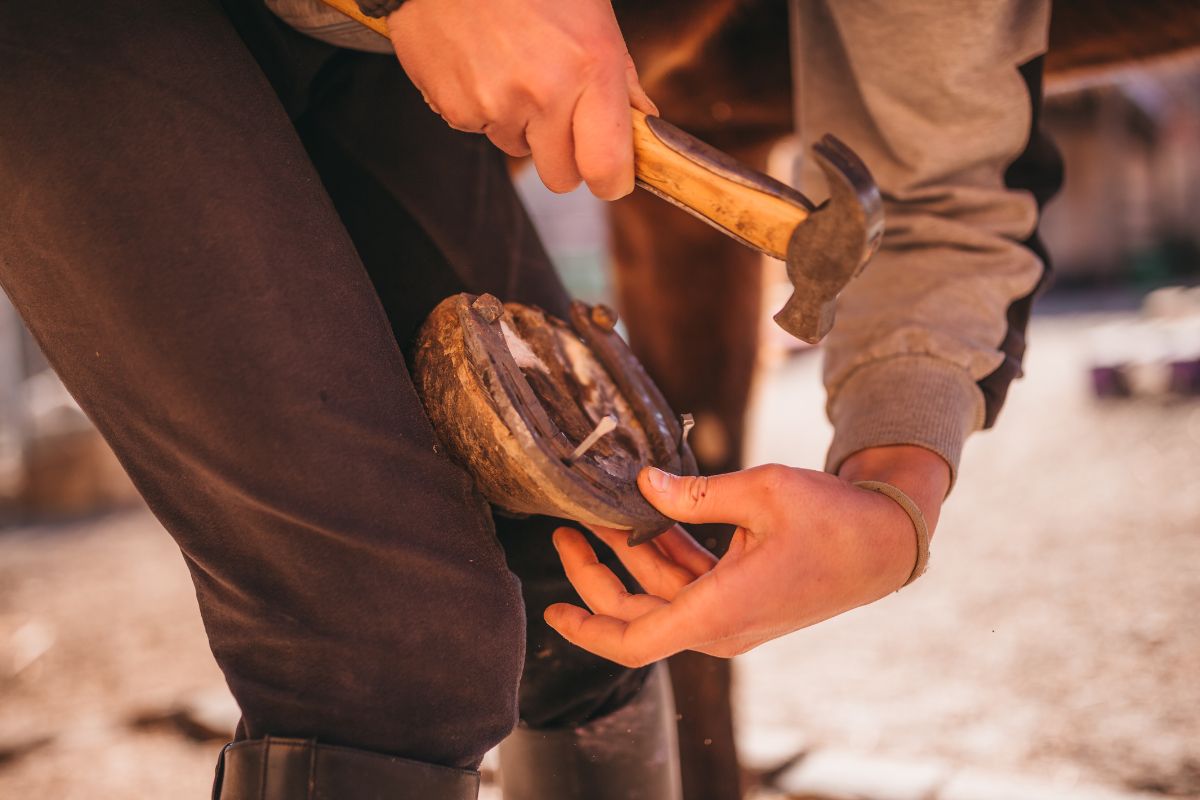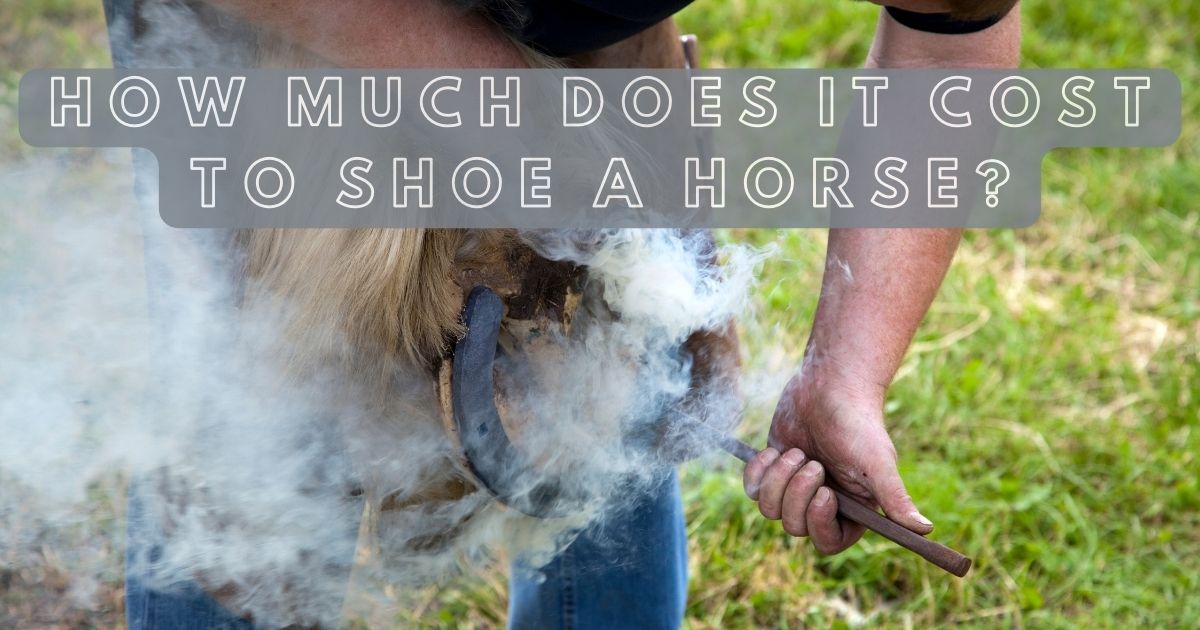Who Can Shoe a Horse?
A farrier refers to a blacksmith who focuses on shoeing horses. But how much does it cost to shoe a horse? It may be costly as his job demands the ability to form and fit horseshoes and the capacity to clean, trim, and shape a horse’s hooves.
A farrier is a skilled craftsperson with a solid understanding of the theory and practice of the trade, capable of shoeing all varieties of equine feet.

How Much Does it Cost to Shoe a Horse?
If you’re wondering how much it costs to shoe a horse, a better question is, how much do farriers charge? It could cost you more in the long run if you choose not to shoe your horse.
This is because having your horse fitted for shoes, sometimes referred to as having it shod, can assist in correcting conformation flaws, protecting weak hooves, and preventing bruising caused by consistent hits and stones.
When people are trying to decide whether or not to shoe their horses, the cost of shoeing a horse is frequently the only consideration they give any weight to. But when it came time to make that life-changing decision. It would help if you made it a priority to consider the situation in its entirety.
The most recent farrier business practices survey, which the American Farriers Journal performed, found that the average price for trimming four hooves and placing four keg shoes across the US is around $142.09. The amount of money required to shoe a horse will go up in proportion to the level of expertise and quality of work performed by the farrier.
Therefore, it is important to keep in mind that in addition to paying for the farrier’s time, you will also be responsible for covering the cost of the materials for shoeing, the delivery gas mileage, and any other overhead costs the farrier may take on.
How Much Does a Farrier Cost?
A farrier is an expert in equine hoof care, including trimming and balancing a horse’s hoof and applying shoes to the horse’s foot, according to the American Association of Equine Practitioners. Only a qualified farrier should do the regular trimming and shoeing of your horse’s hooves, which can also do these services for you.
The expense of hiring a farrier will vary depending on factors such as the difficulty of the task, the number of horses that require trimming, the geographic location, and the specific farrier who will be doing the work. It can also change depending on the expertise level of the farrier.
As with other types of craftspeople, their level of demand will increase proportionately with their experience and competence. The price of a farrier’s services will range between around $50 and $150 for each horse, on average. A haircut can run you back around $30, while a new pair of shoes might set you anywhere from around $90 to $150.
Horse owners should expect to pay anywhere from around $450 to $750 each year, with the number of necessary services averaging five per year. Most farriers like to charge by the hour for their services and should be able to provide a reasonable estimate before beginning work.
A survey on farrier business practices that the American farriers journal carried out revealed that the typical cost of placing keg shoes and trimming four hooves was around 120 dollars. A trim without resetting will cost you around $42, while a trim with resetting would run an average of around $113.
Members of the forum on the website chronofhorse.com reported paying anything from around $55 for a single trim to over $125 for all four. This poll conducted by TheHorse.com found that approximately 72% of respondents spent less than around $100 on hoof care, while 16% stated that they would pay anywhere from around $101 to $150 on hoof care.

How Much Do Horseshoes Cost?
After shoeing your horse, the farrier hands you an invoice for the work done. Even though you may think that a set of horseshoes costs this much, and he spent less than an hour putting them on? You look at the bill, forcing a grin, and grab your checkbook.
You may not see why the cost is so high. However, having your horse fitted for shoes, commonly known as “shod,” can help correct conformation flaws, protect weak hooves, and reduce bruising caused by repeated hits and stones.
When determining whether or not to shoe their horses, owners should not base their decision solely on the cost of shoeing a horse because this is not the best way to care for a horse. The most recent farrier business practices survey found that the average price for trimming four hooves and placing four keg shoes across the US is around $142.09.
The amount of money required to shoe a horse will go up in proportion to the level of expertise and quality of work performed by the farrier.
Therefore, it is important to keep in mind that in addition to paying for the farrier’s time, you will also be responsible for covering the cost of the materials for shoeing, the delivery gas mileage, and any other overhead costs the farrier may take on.
Is There a Way to Minimize Equine Shoeing Costs?
As was just indicated, if a group of horse owners can plan their visits to the farrier at a single place, there is a possibility that they will receive a little discount. According to a survey of farrier rates from 2016, part-time farriers have prices that are, on average, $35 lower than full-time farriers for full shoeing and $6 lower for trimming.
The farriers that work at very high-level stables are typically the best available, and their services come with a price tag that reflects this fact. Suppose your horse is not competing at the very highest levels of the sport.
In that case, you may be able to reduce your expenses by hiring a farrier who is less experienced in the field or who specializes in a less specialized area of the profession. In addition, customers frequently find that if they have been working with the same farrier for several years.
He may keep their prices the same even if he has had to increase his rates for new customers. Therefore, if your farrier is doing a good job, it is best to stick with them and not switch to a different one. Shoes are probably not required for horses who do not put a lot of stress on their hooves or that live and work on surfaces that are not as hard as concrete or asphalt.
This will allow you to keep the cost of a trim within your budget. Do some price comparison shopping; occasionally, a farrier who is merely a trimmer can provide a more reasonable price for trimming than a farrier who shoes horses and needs to cover the costs of all their necessary tools and machines.
Can I Shoe my Own Horse?
In a strict sense, you can do what you think is best for your horse because it is technically your horse; nevertheless, it has only been within the past five years that it has become unlawful for non-farriers to put shoes on horses or prepare any hoof for the placement of shoes.
If you are not a farrier, have not completed farrier school, and have not worked as an apprentice in the farrier trade, there is a significant possibility that you will injure your horse due to poor shoe placement. If the only thing you are doing is trimming and your horse has healthy feet that are straight, it is feasible that you will be able to learn how to take care of your trims.
You would require a minimum of a homeowner’s hoof pick, hoof knife (be aware that there are right-handed and left-handed versions of these), pair of nippers, and rasp; however, none of these tools need to be of the same degree of quality as those used by a professional farrier.
On the other hand, given how important the foot is to the horse, improper trimming can have catastrophic effects on the animal. If you are thinking about trimming your horse’s feet on your own, you should first consult with a farrier to learn the particulars of your horse or horses.
You can trim your horse under the farrier’s supervision until you have enough skill to do it on your own. Under all and all conditions, shoeing is an activity that a preserve by trained specialists.

Key Takeaways
It is impossible to avoid the expense of farrier work, especially when the horse requires new shoes. To meet the expenditures of owning a horse, it is essential to create a detailed budget. This is one of the most important aspects of horse ownership.
On the other hand, the cost of trimming and shoeing a horse is not exactly inexpensive, and there is a strong likelihood that your farrier is under-valuing his services. What are the prices for trimming and shoeing at your barn, and how do they compare to the fees and averages indicated above?
